LAWN PHIX PRO PICK
Dylox 6.2 granular insecticide is my top grub killer by a mile. If you’re looking for prevention, start with Acelepryn. I always have at least a few bags of both when applying fall lawn treatments for customers. You never know when you’ll need them — it’s good to have them just in case.
Table of Contents
Grubs cause devastating, widespread damage, and without the proper control and prevention, they can all but destroy your grass.
The good news is that thousands of products are available to control grubs. The bad news is that it can be tough to know which ones work (and which ones don’t).
I’ve been in the lawn care business for years, so I’ve tried them all, so you don’t have to.
This is my list of the best lawn grub killers (and prevention products) for 2024:
Top Grub Control Products
- Dylox: Best overall grub killer
- Milky Spore: Best natural/organic grub killer
- Acelepryn: Best overall grub preventer
- BioAdvanced: Best big box store option (curative)
- Scott’s GrubEx: Best big box store option (prevention)
But before we jump into the details, I want to make one thing clear:
Grub Killers are NOT the Same as Grub Preventers
Knowing the difference between insecticides that help prevent grub damage (proactively) and those that kill grubs (reactively or curatively) is important.
Generally, grub killers will not prevent grubs but instead get rid of active grubs. If you don’t already have an infestation, you must find a product that kills grubs without harming beneficial insects.
I’ve listed grub killers and preventative products below so you can make an informed decision for your lawn.
5 Best Grub Killer & Control Products
These are the best grub control products I’ve found on the market.
Let’s start with the best overall grub killer first:
1. Dylox: Best overall grub killer
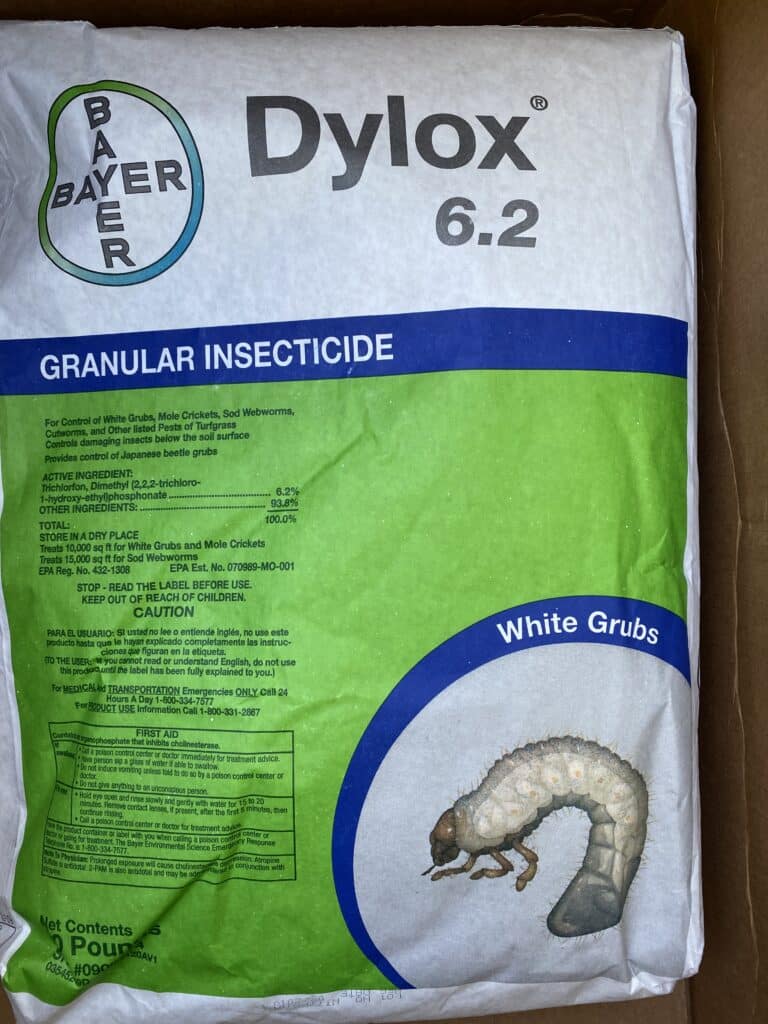
Dylox eradicates grubs by both contact and ingestion, which helps prevent further destruction to your lawn and garden. It’s the fastest-acting and most effective insecticide I’ve ever used to wipe out grubs.
Lawn Phix Review
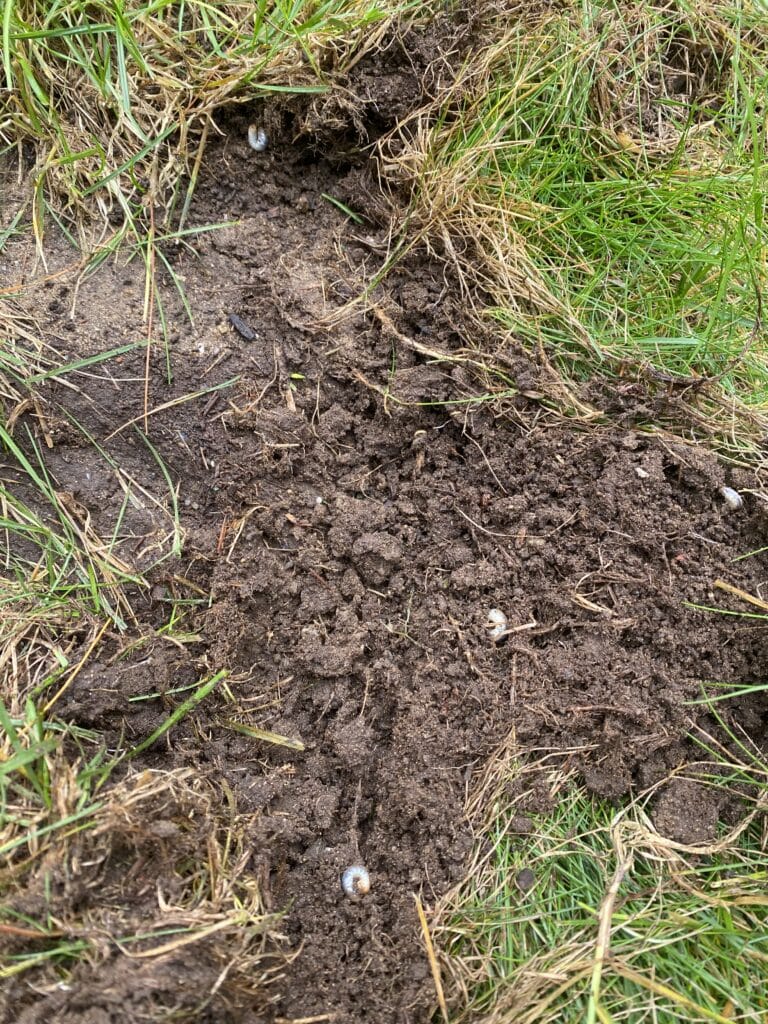

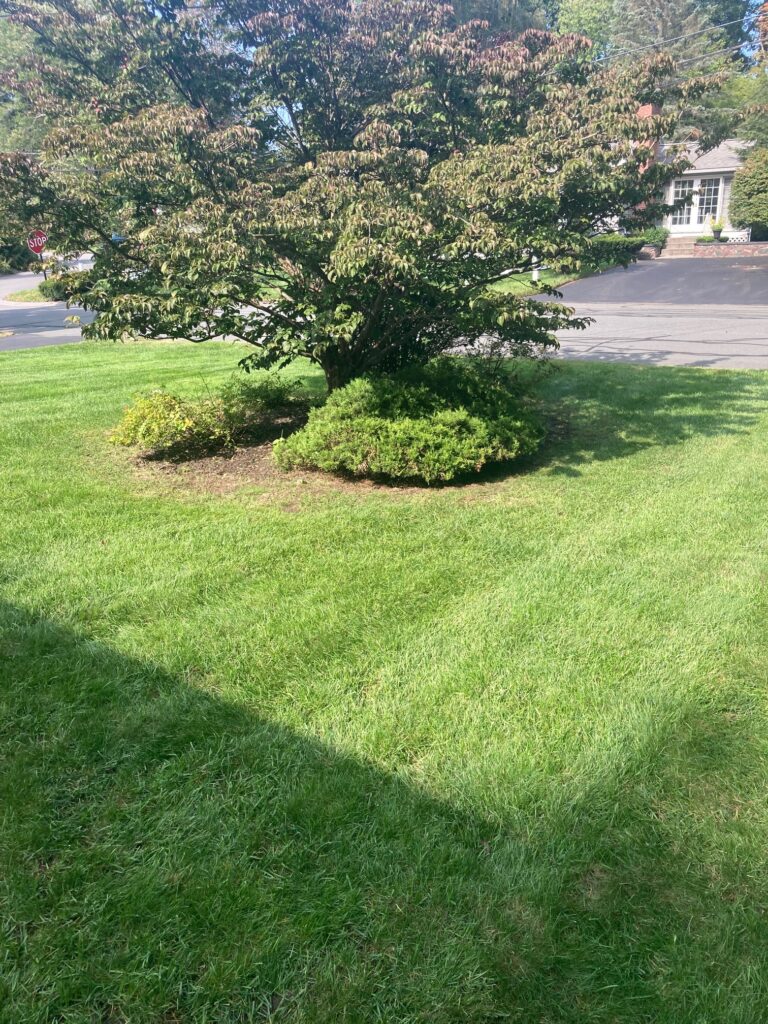
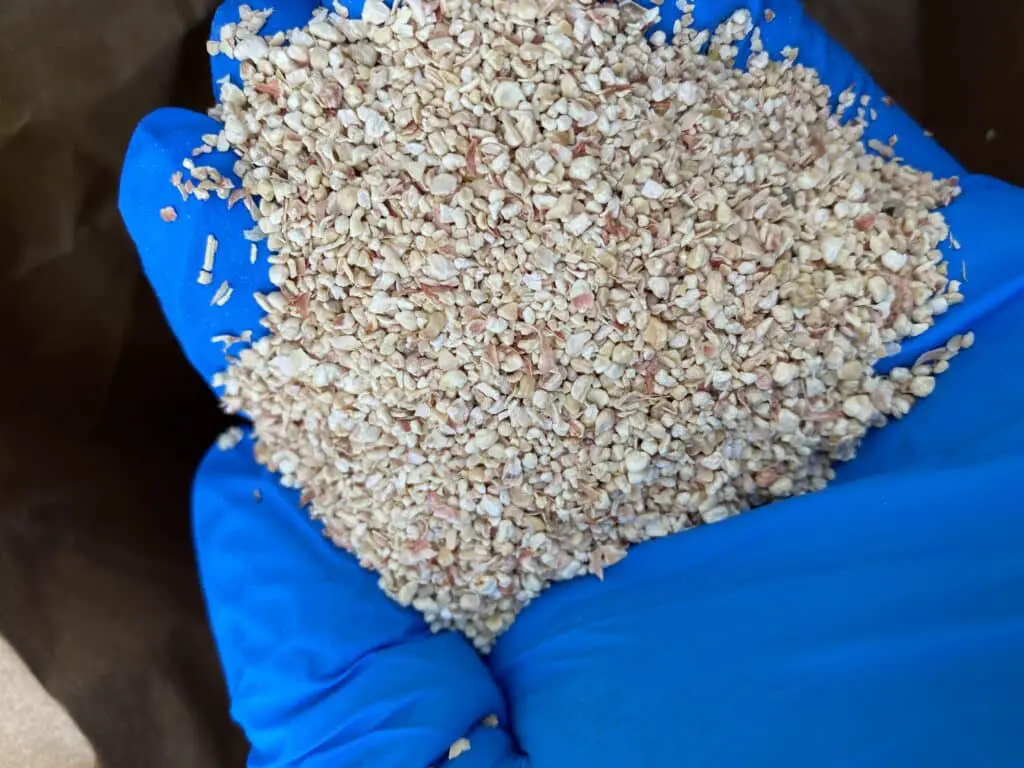
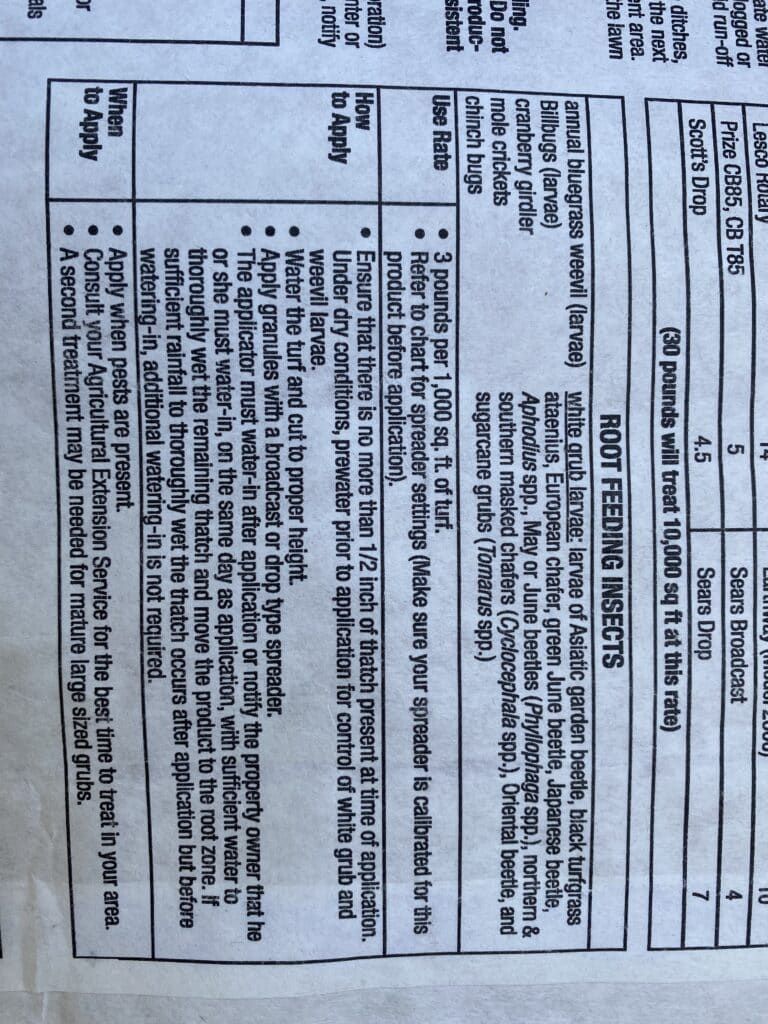
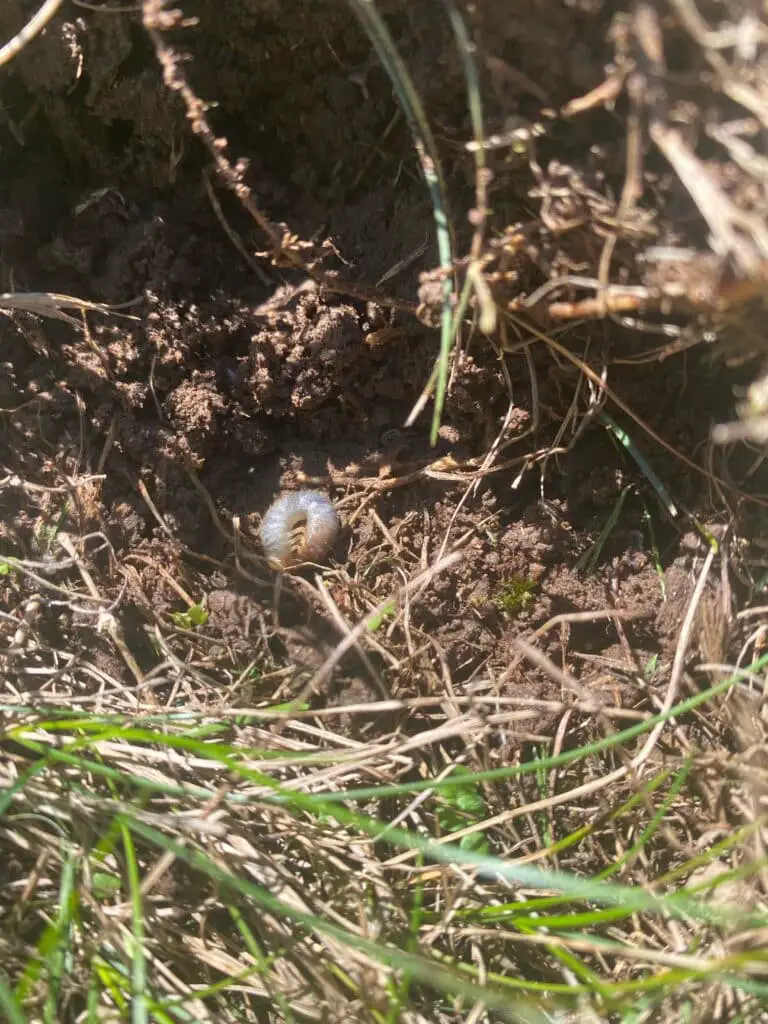
I always carry at least two bags of Dylox in my truck while working for customers. Acelepryn has served me well, but having Dylox on hand ensures my customers stay grub-free.
When I had active grub activity and damage in 2020 (mistakenly using Imidacloprid), Dylox instantly killed the grubs on my lawn. I set the dial to 16 on my Lesco spreader, which was perfect. The prills are small and very light, so the coverage was even and consistent.
2023 saw lots of rain, which masked a lot of early signs of grub activity. Coupled with massive amounts of breakthroughs – mainly from the Oriental Beetle – Dylox has been in high demand. Try to order in advance if you can.
PROS
What we liked.
- It kills and degrades quickly
- There are no restrictions on sites and species
- The best and quickest of the lawn grub killers
CONS
What we didn’t like.
- Slightly more expensive than other options
Dylox Rates
One bag will cover 10,000 sq. ft. My recommendation is to buy extra.
Dylox Specifications
- Active ingredient(s): Trichlorfon 6.2%
- Not available in: AK, CA, ND, PR
- Grubs targeted: White grub larvae, mole crickets, annual bluegrass weevil, sod webworms, cranberry girdler, cutworms, and armyworms.
- Coverage: 10,000 sq. ft.
- Timing: Summer, immediately when grubs are visible and causing damage
- Notes: Water in immediately with 1/2″ of irrigation or rainfall
Find Dylox 6.2 at Do My Own and Lawn Pro.
2. Milky Spore: Best natural grub killer
Milky spore is a unique grub killer that infects vulnerable grubs with spores. This quickly works to kill the grub without the need for an insecticide or additional treatment.
Since Milky Spore only targets Japanese grub larvae, you don’t need to worry about its effects on planets, pets, or children. It doesn’t harm beneficial pests like bees and can be safely applied near bodies of water.
Lawn Phix Review
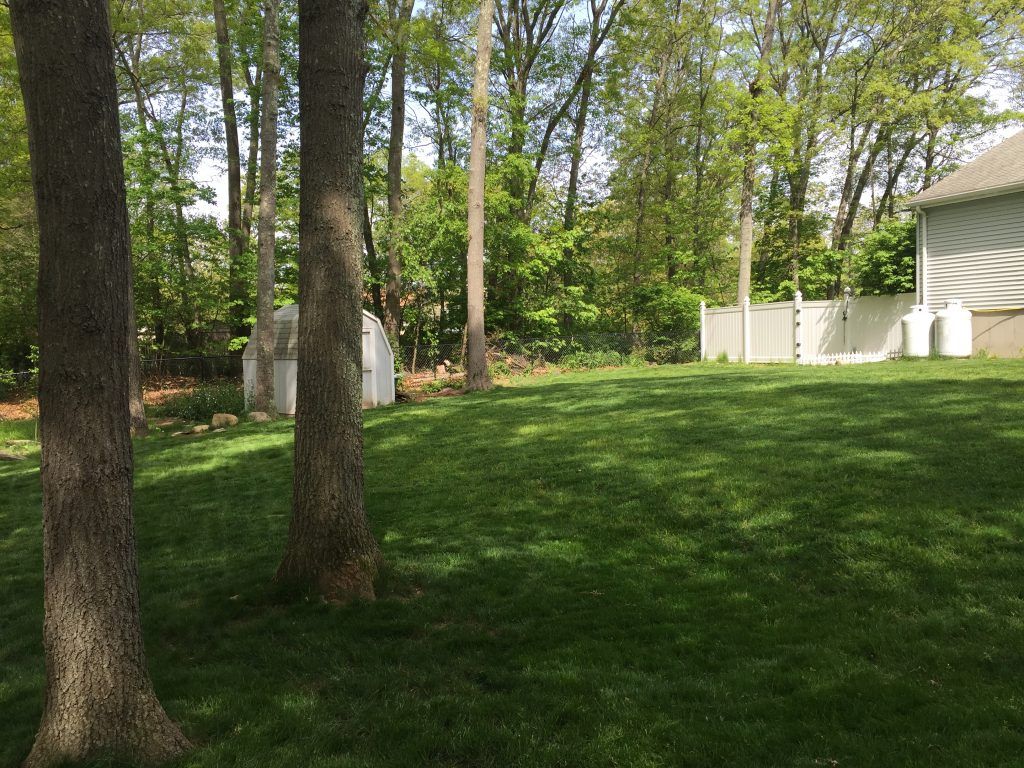
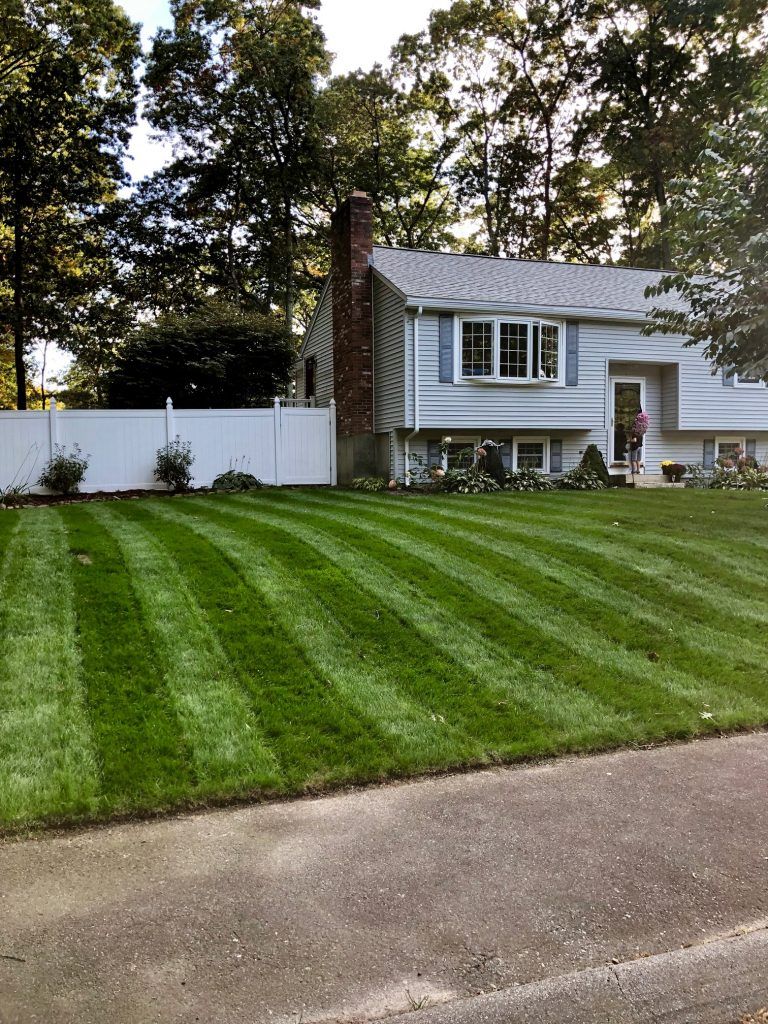
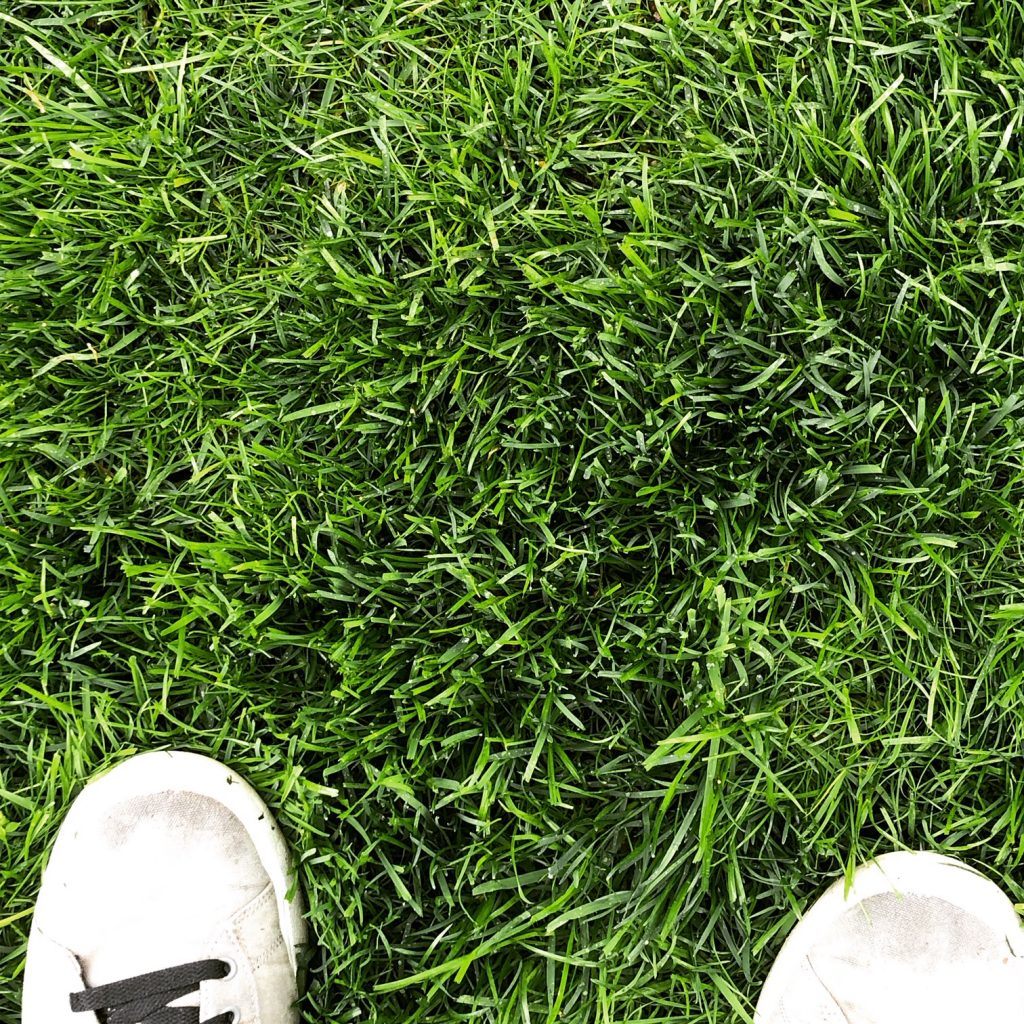
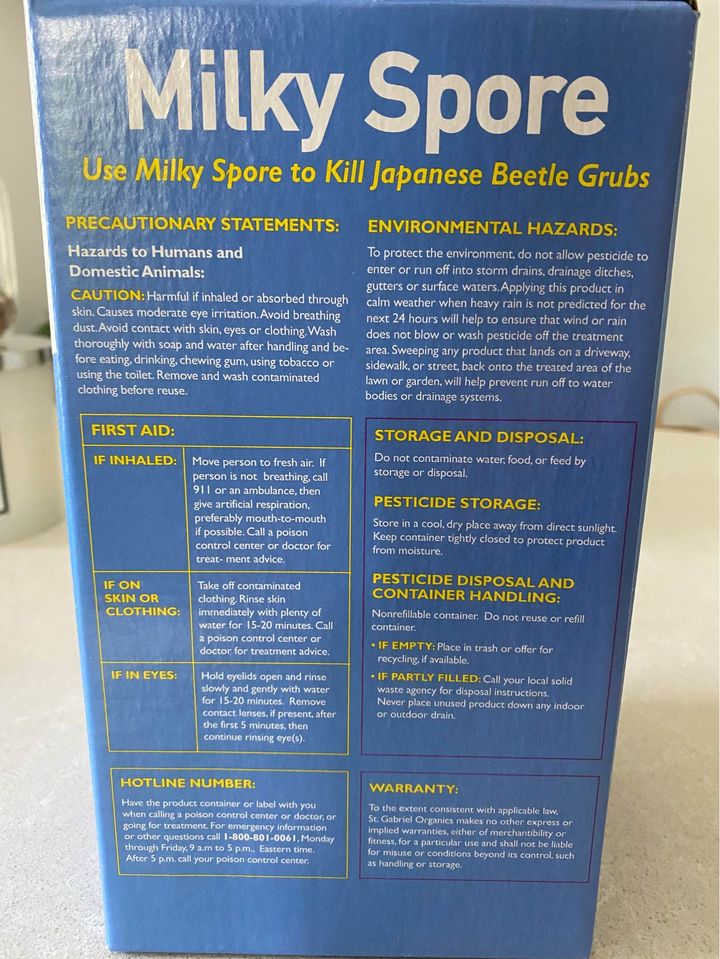
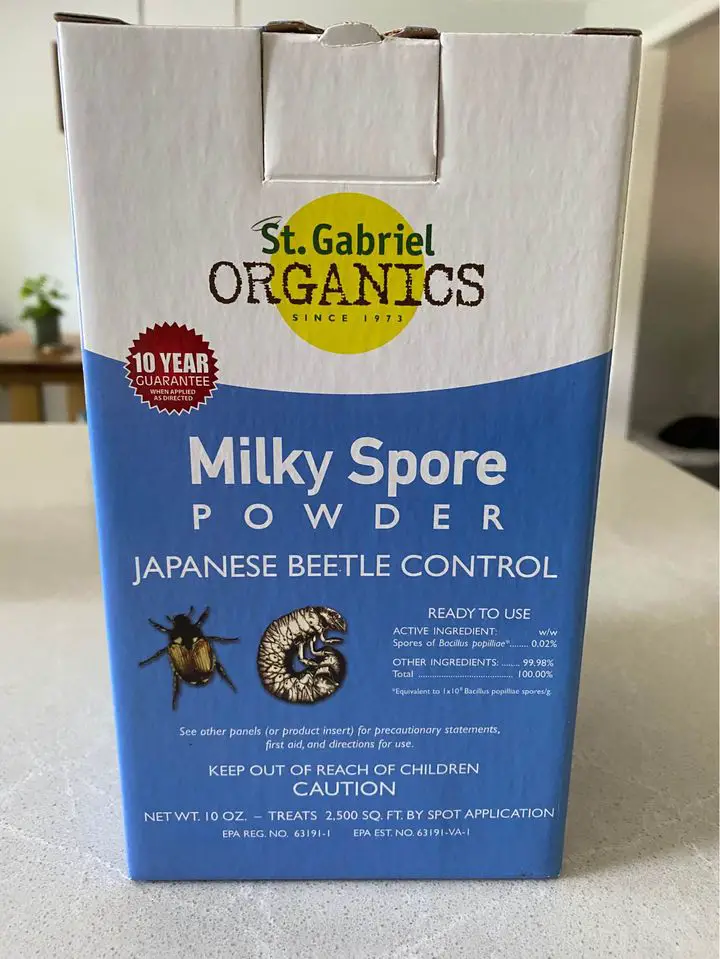
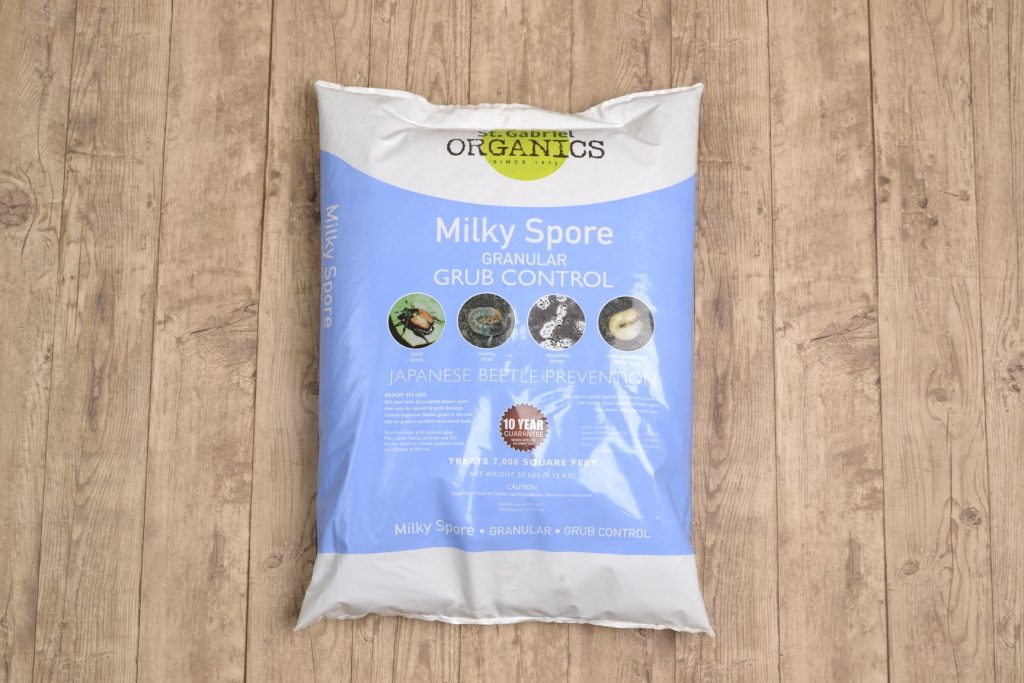
I used Milky Spore when renovating my old house in 2013. As my first child was born, and as the owner of two dogs, going as natural and organic as possible was important to me.
PROS
What we liked.
- Once established, it will last as long as 20 years
- Safe for fish, birds, and fish
- No additional treatments once activated into the soil
CONS
What we didn’t like.
- It does not work immediately
- Requires several applications over two years
Milky Spore Rates
One 20-pound bag covers 7,000 sq. ft. Since it can protect your lawn for up to 20 years (after six applications over two years), it’s an extremely long-lasting solution for well-established grub problems.
Milky Spore Specifications
- Active ingredient(s): Spores of Bacillus Popilliae – 0.02%
- Not available in: AK, AZ, CA, DC, FL, HI, ID, LA, MI, MT, NV, NM, ND, OK, OR, SD, TX, UT, WA, WY
- Grubs targeted: Japanese beetle grubs
- Coverage: 7,000 square feet for a 20 lb bag
- Timing: Spring
- Notes: Once established, this product lasts for years
Find Milky Spore on Amazon and Do My Own.
3. Acelepryn: Best overall grub preventer
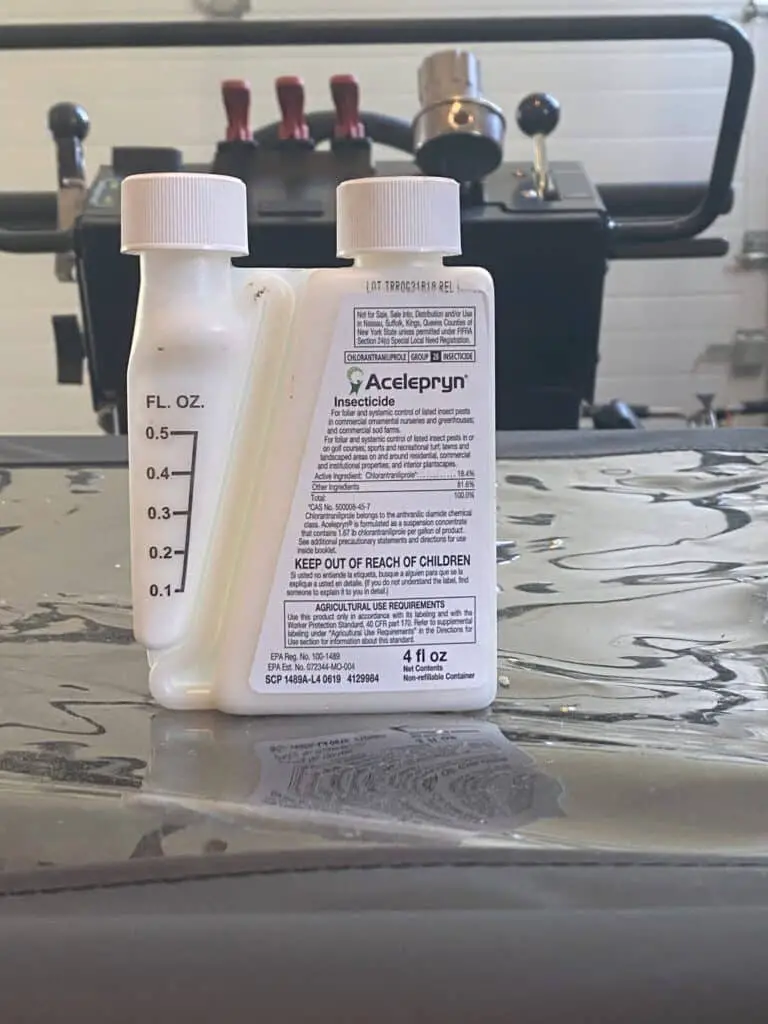
Acelepryn is my go-to product for overall grub prevention – and has been for over four years. Just apply the recommended amounts for your lawn and get season-long prevention. I recommend 0.25 fl oz per 1,000 sq. ft.
Lawn Phix Review
Below are three lawns that were victims of grubs before signing up with Lawn Phix turf nutrition services. Since 2021, Acelepryn has been applied, and all of these properties have since been grub-free.
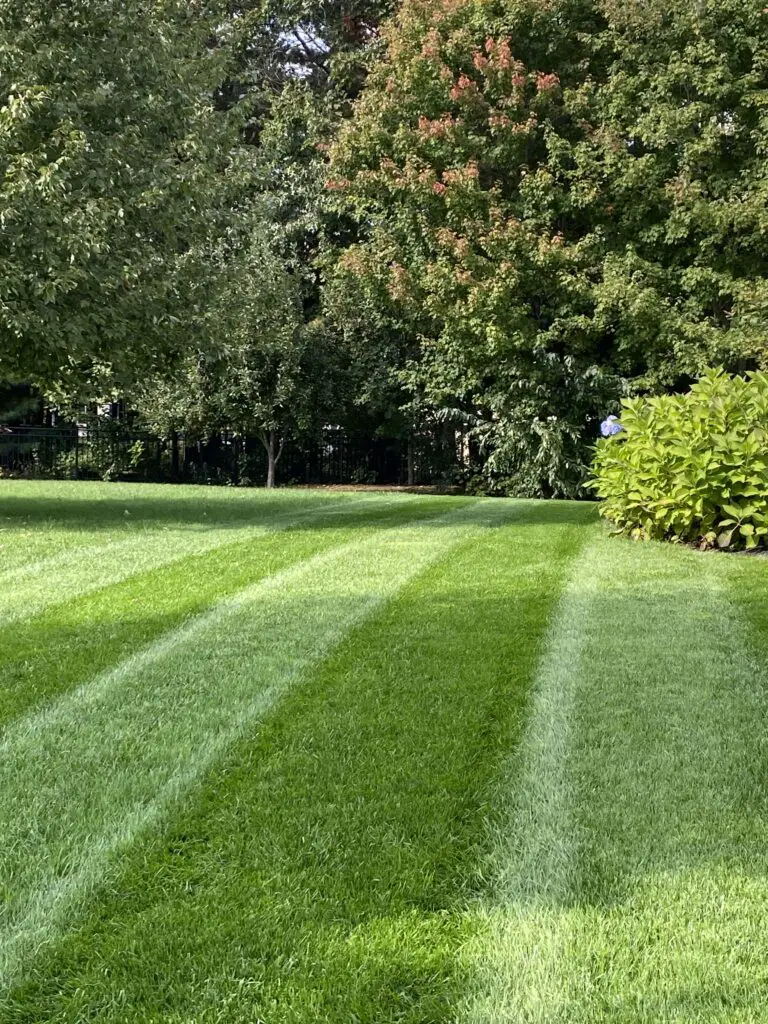

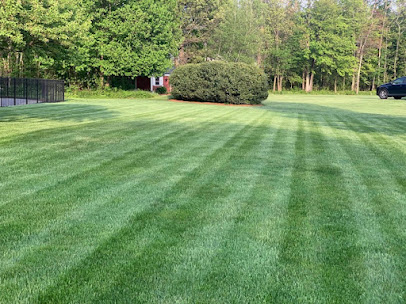
When we moved into our new home in 2019, my neighbors informed me that this property had active grub damage in the summers of both 2018 & 2019, so I knew I didn’t have time for Milky Spore to activate.
At that time, I had three kids and two dogs, and I found Acelepryn to be the safest product outside of organic options (which can take two to three years to work). Low and behold, it work as expected. Meanwhile, I watched grubs eat up my neighbors’ lawns in 2020.
Get it watered in before Memorial Day, and you should be all set for 2024 grubs.
PROS
What we liked.
- Very low toxicity – not even a “Caution” signal word on the label
- Low application rates – as little as 0.18 fl oz per 1,000 sq. ft. or 1.15 lbs. of granular.
- Long residual, effective for over six months
CONS
What we didn’t like.
- It cannot be used in fruit or vegetable gardens
Acelepryn Rates
You should apply roughly 1.15 pounds to 2.3 pounds per 1,000 square feet (depending on the grubs you’re trying to remove).
Acelepryn Specifications
- Active ingredient(s): Chlorantraniliprole 0.2% (granular) or 18.4% (liquid)
- Not available in: HI
- Grubs targeted: Turf caterpillars, white grubs, European crane fly, billbugs, annual bluegrass weevil, spittle-bugs, and chinch bugs
- Coverage: 1.15 pounds to 2.3 pounds per 1,000 sq. ft. (granular) or 0.18 – 0.37 fl oz (liquid) per 1000 sq ft
- Timing: Spring
- Notes: Water in after application or apply before rain.
Available in both 64 oz. and 4 oz. liquids.
Find Acelepryn on Amazon (granular or liquid) and Do My Own (granular or liquid).
The previous options – particularly Acelepryn and Dylox – are the pros choice. These options are available online and in professional stores like SiteOne. If you’re in a pinch and need to run to the local hardware or big box store, then these next two options are what I recommend.
4. BioAdvanced: Best big box store option (killer)
Like Dylox, Bayer 24-hour grub killer also uses Trichlorfon as an active ingredient. You can find this in your local store, so there is no waiting on professional products to kill armyworms or your grub problem.
Lawn Phix Review
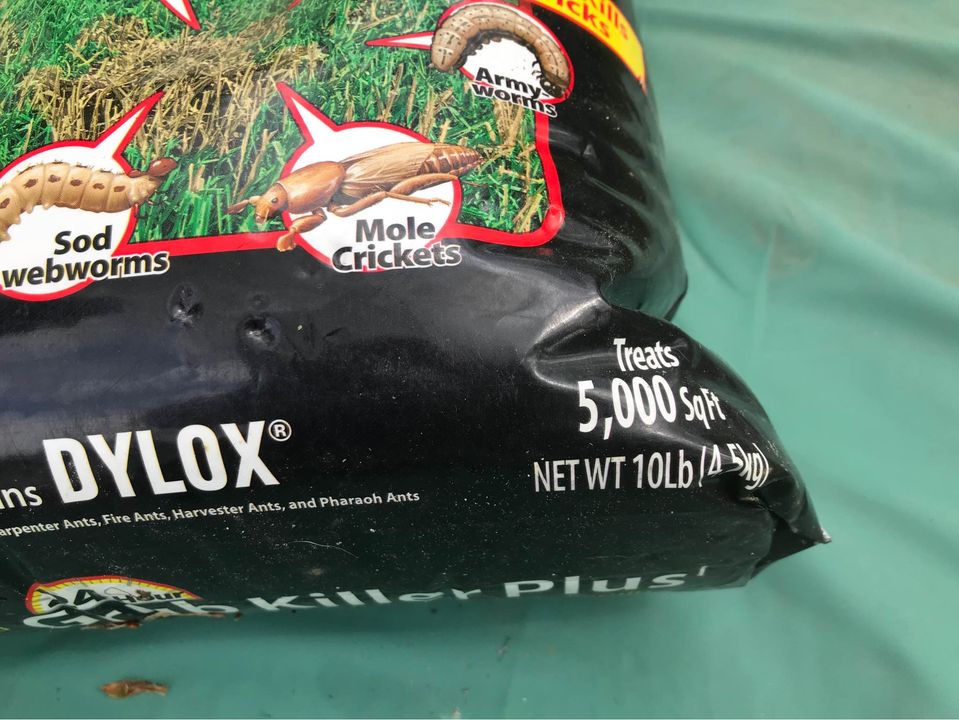
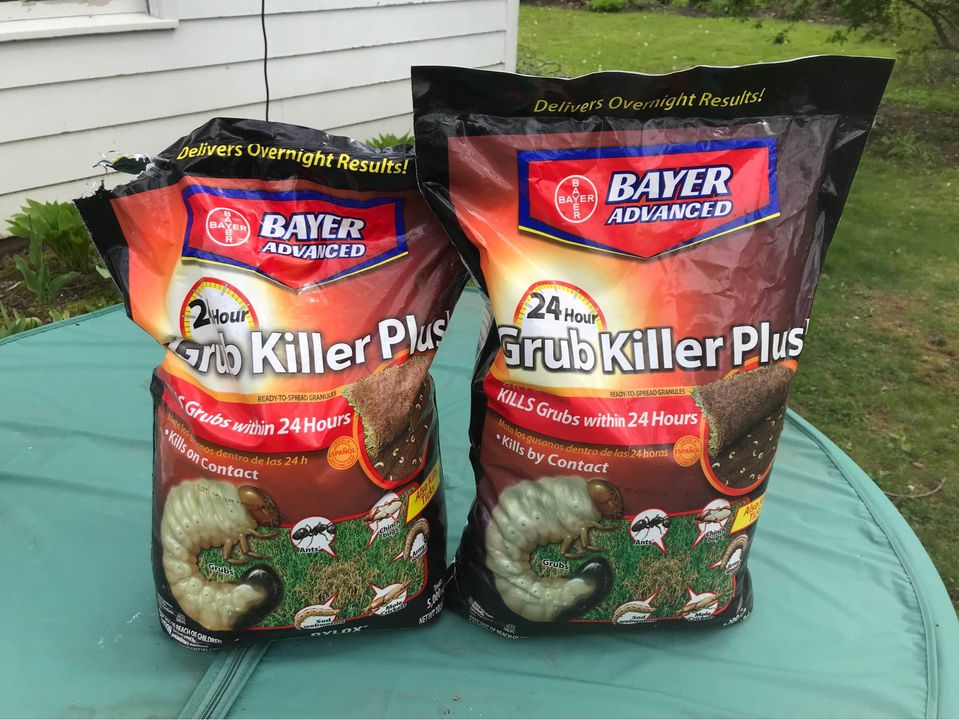
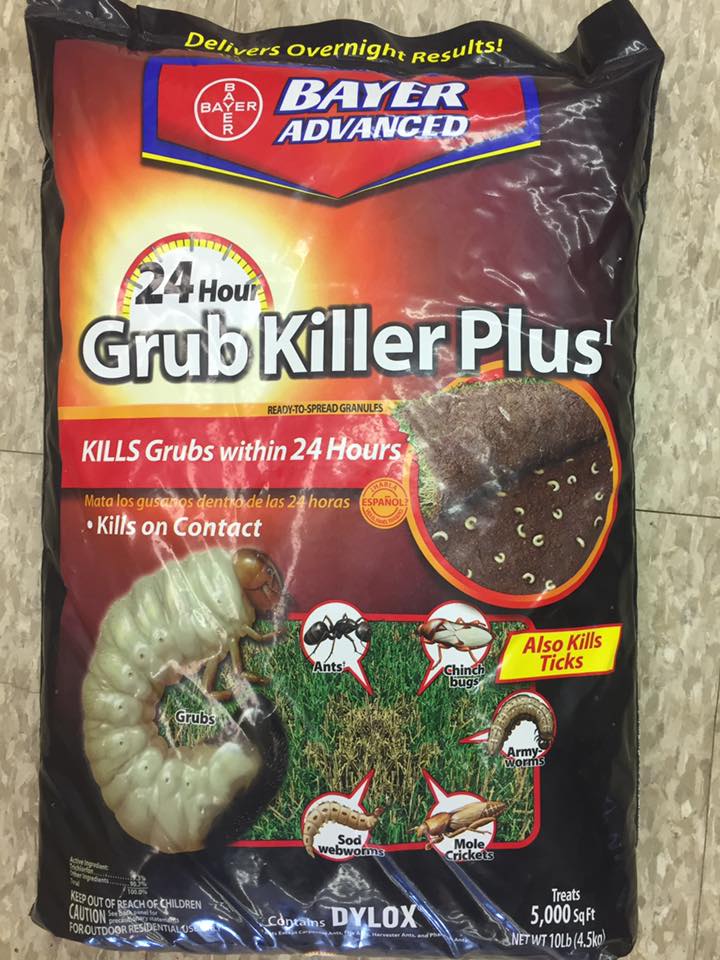
You should apply BioAdvanced grub control as soon as you see lawn damage in the summer. Since it’s available in most large box stores, you can usually pick it up quickly when needed.
Just make sure to follow the label! This product comes with a number of restrictions.
PROS
What we liked.
- Convenient to find in local hardware stores
- The granulated formula is 50 percent higher concentration with the same substantial coverage
CONS
What we didn’t like.
- There are several restrictions on using the product
- Will take higher rates and possibly two applications to completely get rid of grubs
BioAdvanced Rates
Application rates largely depend on the pests you’re trying to remove. For white grubs, a 10 pound bag treats 5,000 square feet. For all other pests (besides mole crickets, white grubs, and billbugs), a 10 pound bag treats 7,500 square feet.
BioAdvanced Specifications
- Active ingredient(s): Trichlorfon – 9.30%
- Not available in: CA, ME
- Grubs targeted: White grub, mole crickets, and ants, and armyworms.
- Coverage: 5,000 square feet per 10 pound bag
- Timing: Summer, immediately when grubs are visible and causing damage
- Notes: Water thoroughly within 24 hours of application
Find Bayer Bio Advanced at Do My Own, Home Depot, and Amazon.
5. Scott’s GrubX: Best big box store option (prevention)
You can’t expect Scott’s GrubX to work as quickly as Dylox (and it may not be quite as safe). However, this is a relatively effective treatment for grubs providing protection for up to four months.
You can find this product in almost any major box store, so it’s not hard to stock up for the spring/summer. Just be sure to have a good spreader on hand and plan your application during a dry spell.
Lawn Phix Review
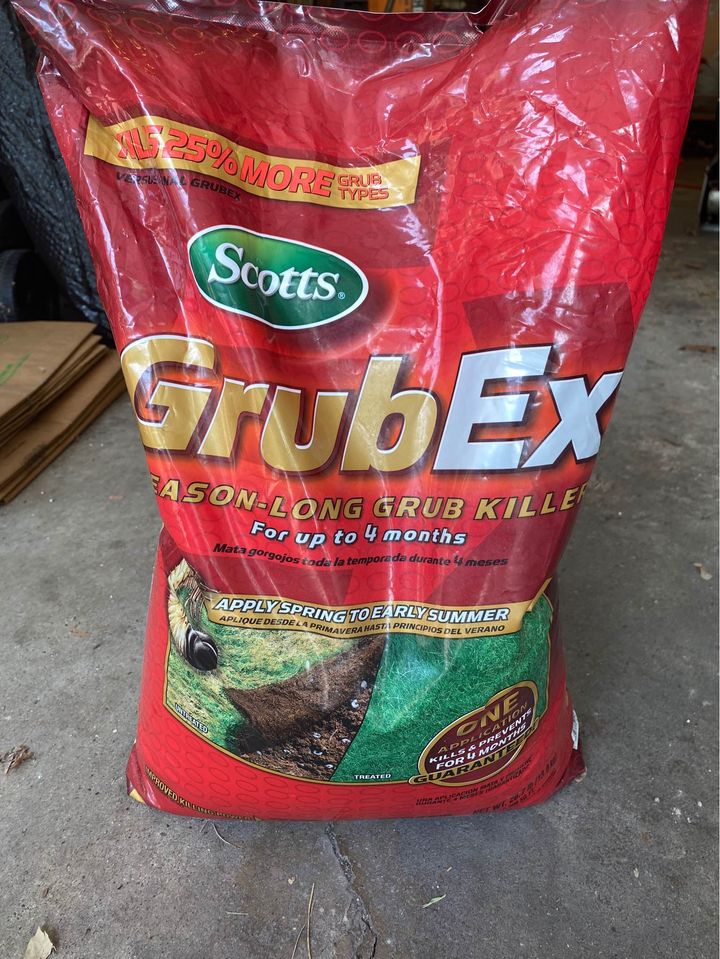
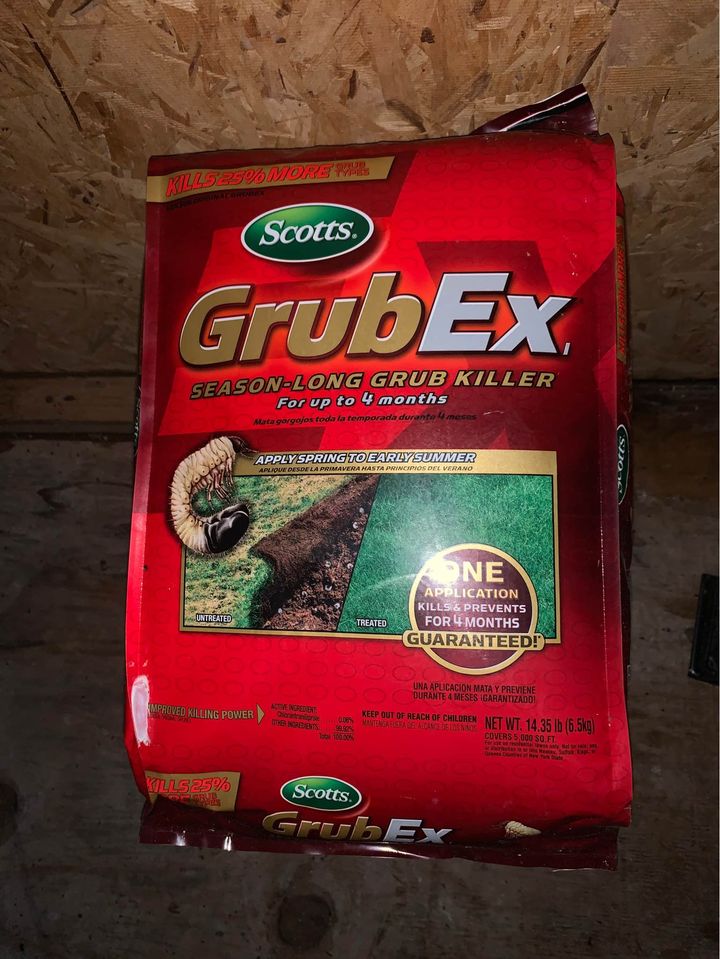
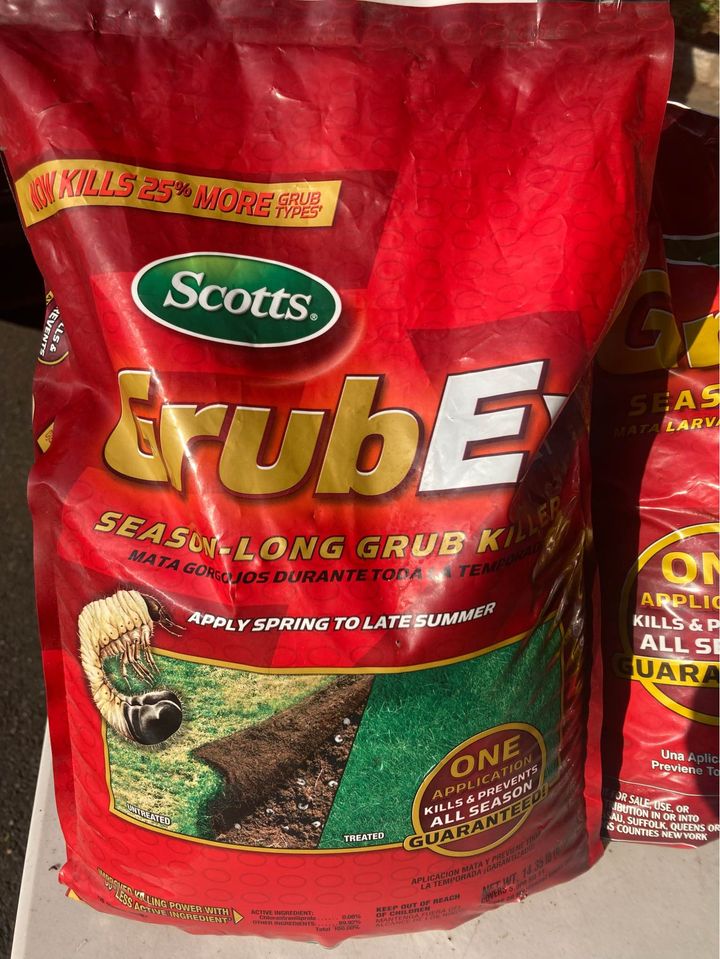
PROS
What we liked.
- Most popular to control grubs
- Easy to find at the local hardware store
- Requires only one application
CONS
What we didn’t like.
- Only can be used to prevent grubs from hatching, not controlling mature grubs
- Newer formula and not as effective as Acelepryn
Scott’s GrubEx Rates
You can cover up to 5,000 square feet with 14.35 pounds (basically a full bag).
Scott’s GrubEx Specifications
- Active ingredient(s): Chlorantraniliprole – 0.08%
- Not available in: n/a
- Grubs targeted: White grubs, armyworms, cutworms, sod webworms, billbug grubs, chinchbugs, and more.
- Coverage: 14.35 lbs to 5,000 square feet
- Timing: Spring to early summer
- Notes: Apply to a dry lawn
Find GrubEx on Amazon, Home Depot, and Do My Own.
When to Expect Grubs in Your Lawn
The eggs of Japanese beetles, chafer beetles, and other grub-producing species hatch about two weeks after they’re laid. This usually occurs in mid to late summer, with peak feeding occurring in early fall.
Because newly hatched grubs are more vulnerable to grub killer solutions than mature grubs, it’s ideal to kill grubs when they’re young. You can target newly hatched grubs, but you should also put down grub prevention long before you spot lawn damage.
When to Control Grubs (AKA Grub Damage)
The best time for preventative grub control is in early spring. As grubs begin to emerge and transform into adult beetles, you can prevent a whole new generation from taking root in your yard.
The best time for reactive grub control is as soon as you notice grub damage in your lawn.
What are the signs of grub damage, you ask?
Dead Grass
- Keep an eye out for telltale dead patches of turfgrass.
Spongy Soil
- You may have a spongy-feeling lawn when you step on it.
Small Holes
- You may notice birds and raccoons digging up your turf to dine on lawn grubs and adult beetles.
Grub Control FAQs
Want the shorter version?
Here’s what you should know.
How can I effectively eliminate grubs from my lawn?
The most effective method to eradicate grubs is by using a grub killer containing Trichlorfon, such as Dylox. Alternatively, preventing grub infestation is recommended, with Acelepryn being a top choice for grub prevention.
When is the optimal time to apply grub killer to my lawn?
Apply preventive control in the spring. But use a grub killer when you observe grubs, grub damage, or signs of grubs feeding, typically in the summertime.
What is the process for killing grub worms in my lawn?
To eliminate grub worms, apply grub killer to the affected area and promptly water it into the soil within 24 hours. The insecticide moves down into the soil, where the roots absorb the chemicals. Grubs come into contact with or ingest the toxic chemicals, leading to their gradual poisoning and demise.
What month should I apply grub control for prevention?
Apply grub control and preventers in April or May to avert fall grass damage caused by grub larvae. Apply grub-killing pesticides after grubs hatch in late summer or early fall, ideally in late August or early September to eradicate an active grub population.
When should GrubEx be applied for optimal results?
For optimal results, apply Scotts GrubEx grub control pesticide in early spring.
How frequently should I apply grub control?
Use Acelepryn once a year in the early spring.
What is the best time of year to treat the lawn for grub worms?
Use grub preventer products in spring to deter grub worms. While grub killer pesticides are effective in summer and fall, they may not prevent existing turf damage caused by grubs. Hence, preventive grub control is often preferred for maintaining a healthy lawn.
Grub Killer vs. Grub Prevention
The lifecycle of grubs, also called grub worms, begins when the grub worms from last year appear as June bugs, also called Japanese beetles. This happens in the spring between May and June. While the Japanese beetles do not harm turf grass, they will damage trees and ornamentals as they feed on them.
June bugs and adult beetles lay eggs in healthy lawns. The eggs hatch in the summer and become white grub larvae. Those are the grubs that are going to damage your lawn. They feed on your lawn from July and September.
As winter moves in, the soil starts to freeze, and any grub worms that have survived bury deep into the soil and put themselves in a vegetative state over winter. When springs rolls in the next year, the newly hatched grubs come out of the soil as beetles around May to June. And so the life cycle of white grubs and June bug beetles continues.
As the grubs feed on your grassroots during the summer and fall, you will see irregular patterns of brown patches all over your lawn. You will also be able to peel your grass back like a carpet. You can see the grubs around the edges of the damaged turf.
To prevent grubs, use Acelepryn for season-long grub control. For organic options, Milky Spore Grub Control. Read our top grub control and prevention products.
*Disclaimer: This post contains effective products against grubs when applied as directed. Always read the label and follow the labeled instructions as set out by the manufacturer – including personal protective equipment (PPE) and restrictions such as near schools and waterways.

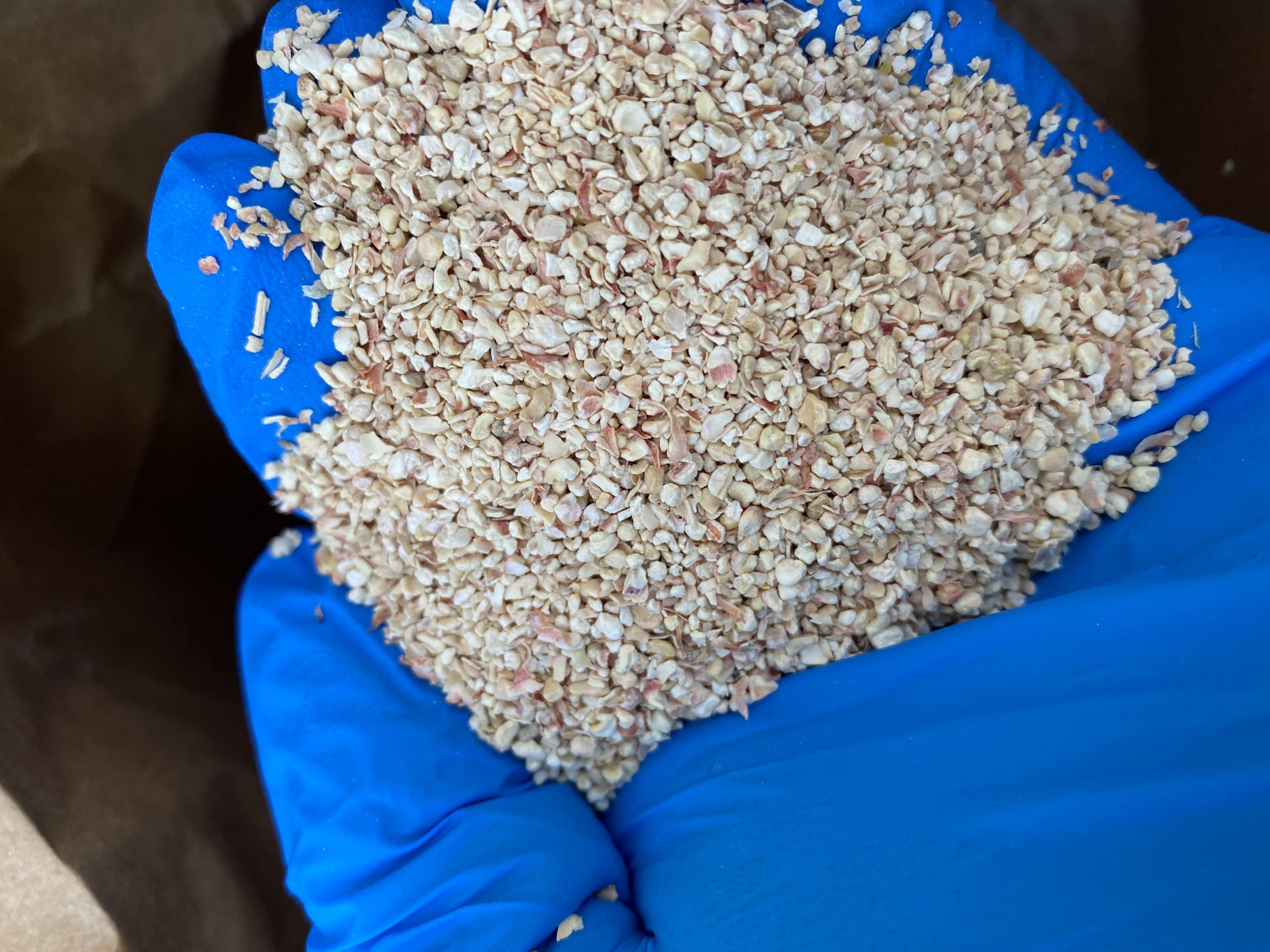
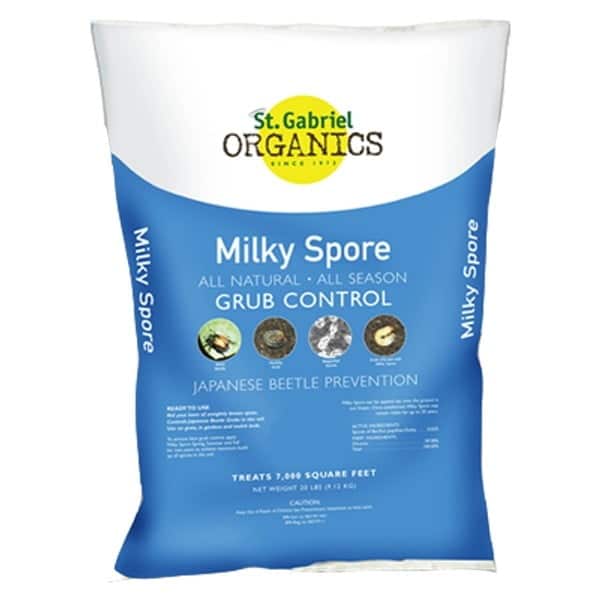

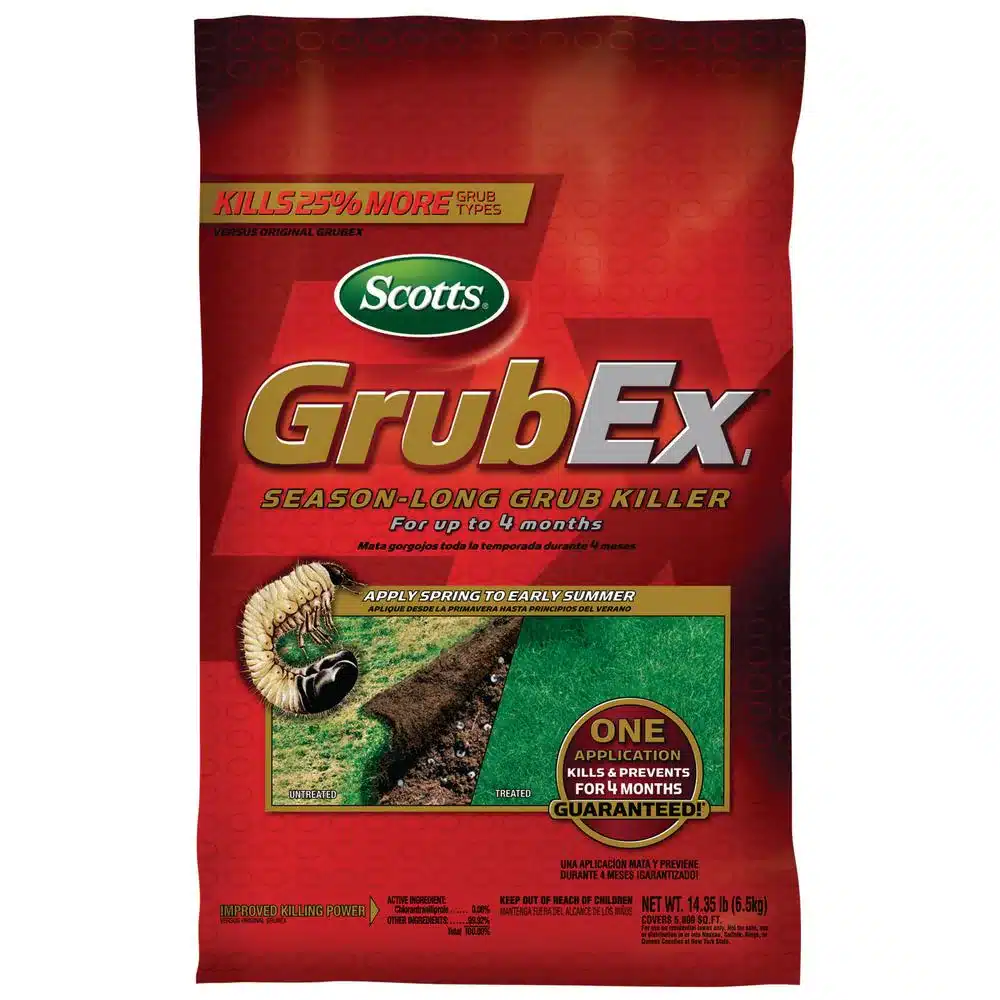

Hello Mark,
Thanks for the good information on your site. I’m in northern WV, just west of Pittsburgh, PA. We’ve had a little warmer weather than usual and I usually apply Meridian in late Apr to early May… especially in an area near my house that I’ve had some grub and ground mole activity in the past.
We’ve had a little warmer weather earlier than usual and I’m seeing a little but activity already, though I know it’s not grubs. We’ve had rain the last couple days and a break in it this afternoon. I was going to apply some Grub-X and also some other bug killer together while we had a break in the rain this afternoon. We’re expecting rain the next two days. Excuse me for the long build-up to my question. But you and Scott’s say to apply it to a dry lawn. Mine’s certainly not right now. Why is that necessary? Was just hoping to get it down while I had a chance today and get it rained in tonight/tomorrow.
Thank you,
Dan Marino
Mark,
Thank you again for the good information on your site, but I did eventually find info regarding my previous question about applying Grub-X to a wet lawn. It said that could dilute it and lower it’s effectiveness.
Thank you again,
Dan Marino